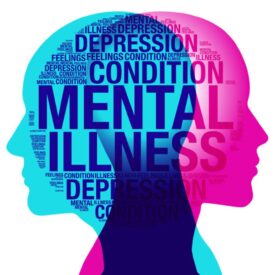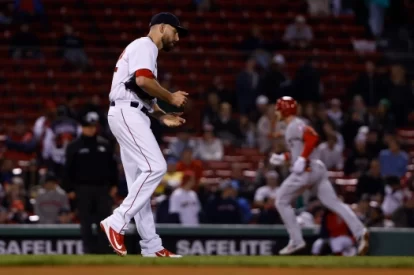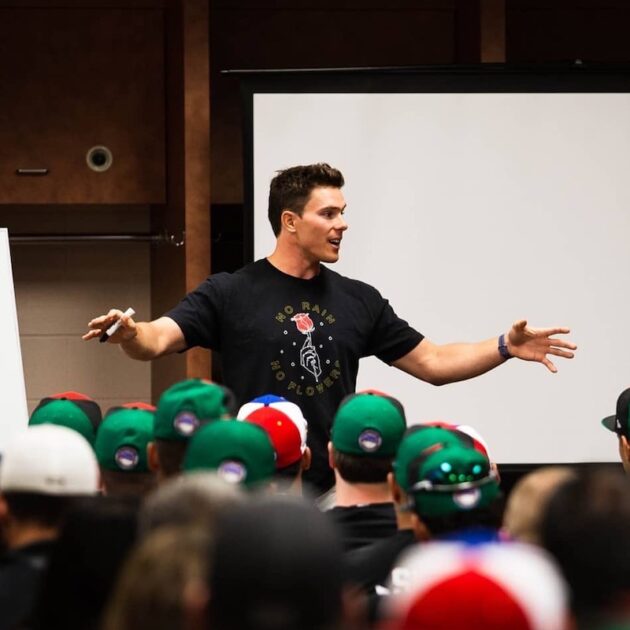Navigating your way to adulthood can be difficult, but our current generation of children might be facing more adversity and challenges. On Tuesday, December 7th, U.S. Surgeon General Vivek Murthy declared a youth mental health crisis. He stated that many young people are facing “devastating” mental health effects due to the challenges their generation is experiencing, including the COVID-19 pandemic.
A new 53-page report highlights the ever-growing and urgent need to address youth mental health. National surveys have shown significant increases in adolescent mental health symptoms, including depressive symptoms and suicidal ideation. The report states that from 2009 to 2019, the proportion of high school students reporting persistent feelings of sadness or hopelessness increased by 40%; the share of seriously considering attempting suicide increased by 36%, and the share creating a suicide plan increased by 44%. On top of that, between 2007 and 2018, suicide rates among youth ages 10-24 in the United States increased by 57%. These numbers are staggering.
NEW: Today I released a Surgeon General's Advisory on #YouthMentalHealth that calls our nation to action to address our #YouthMentalHealth crisis. https://t.co/M1oq29Yfw7 [1/7] pic.twitter.com/oArHt4LtUs
— Dr. Vivek Murthy, U.S. Surgeon General (@Surgeon_General) December 7, 2021
What are the Causes?
Many factors come into play that can shape young people’s mental health. Our mental health conditions can be developed through biological factors (like genes and brain chemistry) and environmental factors that include life experiences. The causes are still complex and not entirely definitive. The report split the reasons into five categories: Society, Environment, Community, Family, and Individual based on the World Health Organizations Determinants of Adolescent Health Development. I want to expand on the first three that I think can relate to so many:
Society: Societal pressures include media and technology, popular culture, government policies, social and economic inequalities, discrimination, racism, etc. These issues are ever-growing for our society. While technology has played an essential role in society, it has also seemed to play a role in many of us feeling less connected. Youth express heightened levels of loneliness even though they are spending hours “connecting” over social media. When we don’t have the opportunity to connect with others in person, it is very easy to feel increased loneliness. It becomes challenging to develop a genuine human connection virtually, and social media does not seem to address the connectivity needs of young people.
We're stepping away from social media for the bye week to focus on our mental health.
— Indianapolis Colts (@Colts) December 9, 2021
We encourage you guys to do the same: https://t.co/pYs0TpbEkn
See you on Monday! pic.twitter.com/HlpEghgRcY
Recent research also shows that screen time may displace activities like sleep, exercise, and in-person training that are crucial in our physical and mental health. The more screen time we have, the less we can focus on our well-being. Increased screen time can also lead to young people being inundated with popular culture where they are constantly comparing and contrasting themselves to others. Whether it is their looks, the number of followers they have compared to someone else, or how much money they have compared to others.
Environment: The report includes neighborhood safety, access to green spaces, healthy food, housing, health care, pollution, natural disasters, and climate change as some of the key factors included. This one hits home for me as I struggled mightily during the COVID-19 pandemic and living in Washington, D.C. My mental health was hit hard living in a big city and lacking access to the outdoors to get away. Being isolated inside on top of that didn’t help either. My mental health improved tenfold when I moved to a part of the city that had tons of access to green spaces, and I was able to access a car to get out to the outdoors outside of D.C.
Hey you! This is your gentle reminder to take a break from scrolling today and get some fresh air. ☺️🌳🍂🌱🍁🌳
— Active Minds (@Active_Minds) December 5, 2021
Community: Community factors include relationships with peers, teachers, mentors; faith community; school climate, academic pressure, community support. Lacking a sense of community is something I have touched on many times before. It seems as though many people have this heightened sense of loneliness because of a lack of community. I even have experienced it significantly in a big city like D.C. It can be tough to find groups that bring you that feeling of being home or make you feel a sense of belonging. Often, the connections we develop tend to feel like they are surface-level. The COVID-19 pandemic only exacerbated that as we lacked access to groups, whether our faith groups, intramural sports team, etc.
What Can Be Done?
The report concludes by saying, “This is a moment to demand change.” There is a need for more resources to understand and address mental health challenges, especially in the younger generation. We also need to find ways to help people develop a better sense of community. To help them understand and know that they are not alone.
We need to expand access and care to behavioral health services and supports, but that can’t be done without developing ways to stimulate workforce growth in the field. We also need to get to a point as a society where we treat mental health the same way we treat physical health. Most people are willing to do a yearly physical and get treated for a bodily injury. If we can work collectively to destigmatize mental health, we can get to a point where we treat our mental health the same way.
We need to promote systematic mental health education. According to a recent report, mental health education in schools can destigmatize mental health and improve attitudes, enhance the knowledge and skills needed for prevention, and promote increased help-seeking. Mental health education should be a part of a comprehensive health education curriculum in schools.
There are so many additional steps we could take to improve the mental health of our younger generation and everyone. As we keep living through this public health emergency, the need to address these issues will become ever more urgent. As the report stated, this is a moment to demand change. This is our opportunity to destigmatize mental health and improve access to the services and support every child needs. It is our opportunity to let every child know they are not alone.








